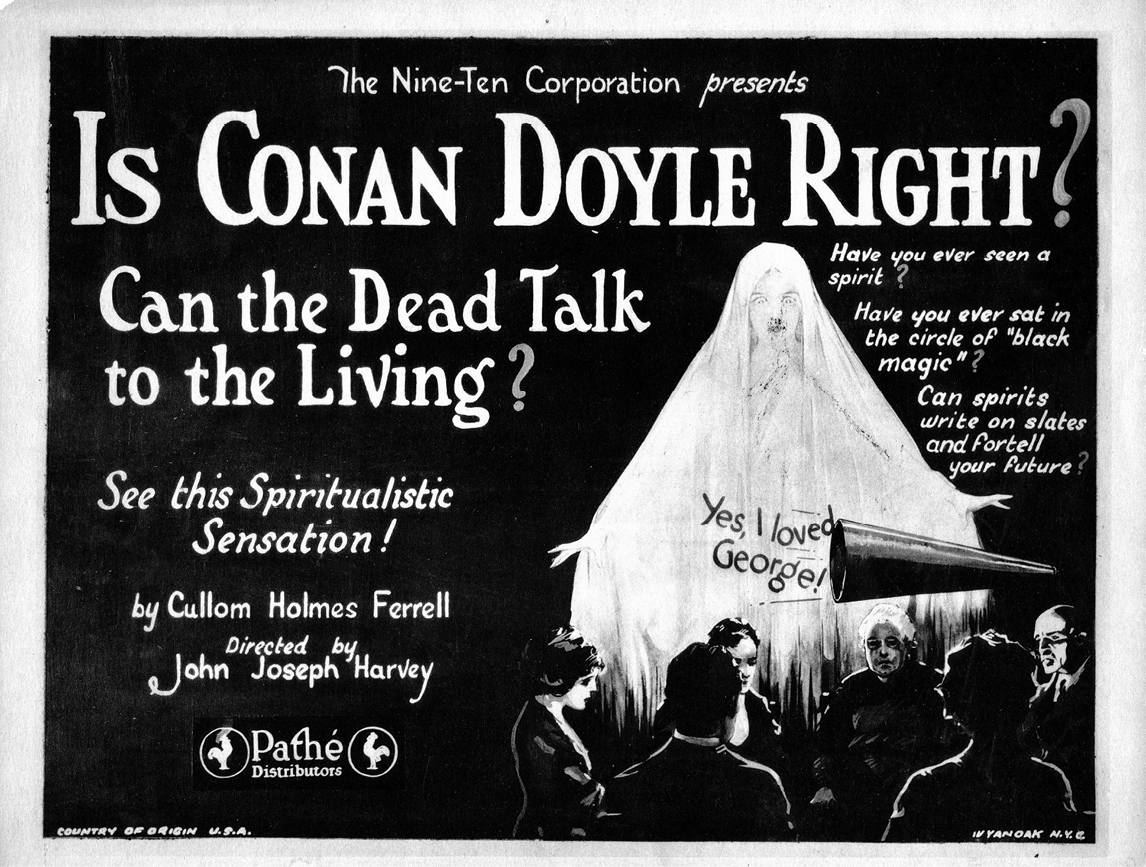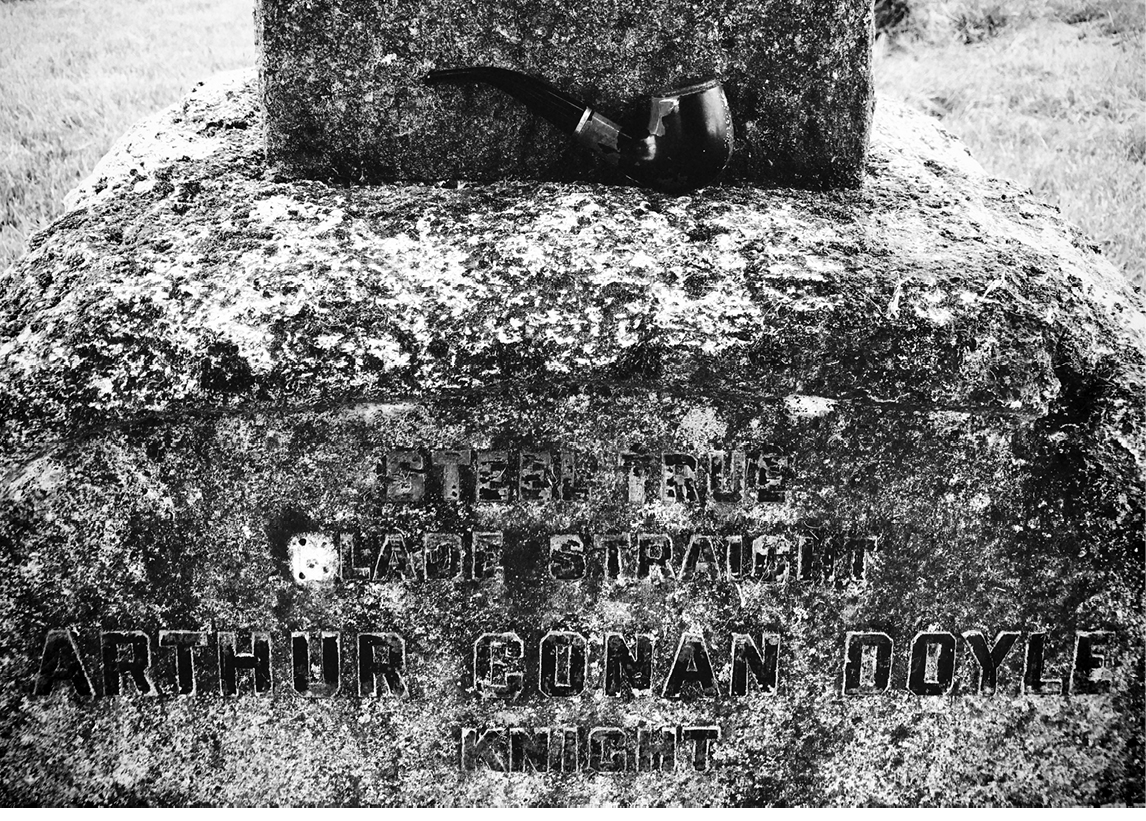
Полная версия:
Ghostland: In Search of a Haunted Country
Later, at the same June 1922 séance, Doyle’s thirteen-year-old son Denis, ‘a great lover of snakes’, asked Kingsley: ‘Where are the snakes with you?’ To which his ghost brother replied: ‘In their own place, old chap. We are so proud of you, Denis, and the way you are developing in every way.’ Reading these transcripts now it’s difficult to imagine how the man responsible for the creation of the arch-rationalist Sherlock Holmes could accept these banal messages so unquestioningly as solid evidence of an afterlife, and not as the understandable attempts (either consciously or subconsciously) of his wife – who had also lost her brother during the Great War – to bring comfort to a grieving old man and his family.
At the beginning of the 1920s Doyle struck up an unlikely rapport with Harry Houdini, the American magician and escapologist who was starting to engage in a mission to expose fraudulent mediums, hoping in the process to find a genuine means of communicating with his dead mother.* In the same month that Denis asked his vanished brother about the snakes, Jean engaged in automatic writing in the presence of Houdini, producing seven paragraphs purporting to be from the showman’s mother. Houdini was unimpressed – the deceased woman’s English was poor for one thing, and Jean’s transcript failed to capture her way of talking. The two men’s friendship began to fracture thereafter, their disagreement later magnifying into a high-profile spat. Reading them now, the words alleged to have come through to Jean from the late Mrs Houdini bear a striking resemblance to those received from John Thadeus Delane: ‘It is so different over here, so much larger and bigger and more beautiful …’
In a 1927 magazine article Doyle argued the case that various Victorian writers – notably Oscar Wilde and Jack London – continued to produce works from the other side. Doyle also conducted a conversation himself, through another medium, Florizel von Reuter, with a figure he reckoned could well have been Charles Dickens, and who went on to provide him with the solution to the mystery of Edwin Drood: ‘Edwin is alive and Chris is hiding him’ (‘Chris’, according to Doyle, being the Reverend Crisparkle).
‘Every year spring throws her green veil over the world and anon the red autumn glory comes to mock the yellow moon.’ Purported communications from Wilde like the preceding sentence (part of a larger tranche of writing said to emanate from the dead aesthete) were, however, Doyle’s favoured evidence of posthumous literary work. They were transmitted to the hand of a medium, Mrs Dowden, which was in turn laid upon their transcriber, a Mr Soal. Doyle seizes on their florid language and use of colourful adjectives as proof of their famous sender’s identity: ‘This is not merely adequate Wilde. It is exquisite Wilde. It is so beautiful that it might be chosen for special inclusion in any anthology of his writings.’ Doyle does not seem able to countenance the possibility that he is being duped:
What then is the alternative explanation? I confess that I can see none. Can anyone contend that both Mr Soal and Mrs Dowden have a hidden strand in their own personality which enables them on occasion to write like a great deceased writer, and at the same time a want of conscience which permits that subconscious strand to actually claim that it is the deceased author? Such an explanation would seem infinitely more unlikely than any transcendental one can do.

LMPC/Contributor via Getty Images
It would not be long before the 71-year-old author joined his fellow literary giants London, Wilde and Dickens, as well as his eldest son, Kingsley, and his former friend Harry Houdini.† At eight thirty on the morning of 7 July 1930 – seated in a basket chair in his bedroom, looking towards the window – Sir Arthur Conan Doyle passed peacefully at his main residence, Windlesham Manor in East Sussex. He was buried in the gardens of the house, surrounded by a sea of well-wishers’ flowers, next to his writing hut. In the immediate aftermath of his death – on occasions including the memorial service held at the Royal Albert Hall six days later, at which a vacant chair was left for him on the stage beside his wife – numerous mediums asserted that they had received beyond-the-grave communiqués from Spiritualism’s grand flag-bearer. With reports of these alleged messages threatening to become overwhelming, his widow pushed back, stating: ‘When he has got anything for the world he will communicate with us first.’ And it was not long before the family resumed their contact. Jean continued to hear Arthur’s voice at the sittings she conducted right up to her own passing in 1940, even claiming that her husband’s spirit had diagnosed her own cancer before her doctors; whether Pheneas was at this point still her otherworldly guide, I could not say.
We do, however, have irrefutable proof of at least one last earthly trip Doyle was to make, a quarter of a century after his body had departed this life: a hundred-mile hearse ride. In 1955, after the Windlesham estate had been sold, his remains were exhumed, moved and reinterred, along with those of his spouse, beneath a mature oak in the southern corner of Minstead churchyard, close to their beloved New Forest retreat. It is a pleasant, peaceful final spot of rest; when I visit, ponies are galloping after each other in the adjacent paddock. Someone has placed a bent smoking pipe on top of his headstone too, which seems an appropriate touch.

Since the Doyles’ purchase of nearby Bignell House in 1925 it had acquired a reputation for being haunted – locals knew the family held their séances there, with the 1929 fire that gutted the property adding to its aura. Doyle put the blaze down to psychic forces, though sparks from the kitchen that ignited the thatched roof are the rational explanation. And, although he brought in builders to restore his house in the woods (today a private home set back from the busy main road), Doyle did not live to see the work completed. In 1961 Bignell’s new owners – both doctors trained at the University of Edinburgh, the same institution at which Doyle had also studied medicine – had the place exorcised. No more unexplainable noises were reported, and there were no further sightings of the tall, moustachioed, slipper-wearing figure of Conan Doyle’s ghost, said to search the attic for a missing red leather diary the late author required for his spectral memoirs.
Something of the new beginning that the Girlingites hoped for, as well as hints towards the answers to the existential questions that those others drawn to the forest longed to find, are also present in the work of Algernon Blackwood, a prolific Edwardian writer of ghost stories and what is often classified as ‘weird fiction’. (H. P. Lovecraft defined the ‘true weird tale’ as one that possesses a ‘certain atmosphere of breathless and unexplainable dread of outer, unknown forces’.)
On the suggestion of his publisher, Blackwood also penned a number of crossover tales intended to cash in on the success of Doyle’s Sherlock Holmes, successfully introducing, in 1908, the psychic investigator John Silence, who used his detective skills and other more esoteric abilities to bring about a resolution to various occult mysteries. The brilliantly named Silence is a figure similar to Sheridan Le Fanu’s Dr Hesselius (from the tale ‘Green Tea’ some forty years earlier) and was followed two years later by William Hope Hodgson’s Carnacki ‘the Ghost Finder’, and several lesser imitators right up to The X-Files
Конец ознакомительного фрагмента.
Текст предоставлен ООО «ЛитРес».
Прочитайте эту книгу целиком, купив полную легальную версию на ЛитРес.
Безопасно оплатить книгу можно банковской картой Visa, MasterCard, Maestro, со счета мобильного телефона, с платежного терминала, в салоне МТС или Связной, через PayPal, WebMoney, Яндекс.Деньги, QIWI Кошелек, бонусными картами или другим удобным Вам способом.
Вы ознакомились с фрагментом книги.
Для бесплатного чтения открыта только часть текста.
Приобретайте полный текст книги у нашего партнера:
Полная версия книги
Всего 10 форматов



